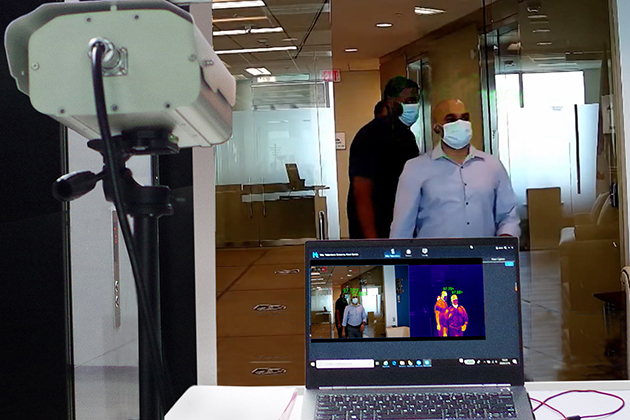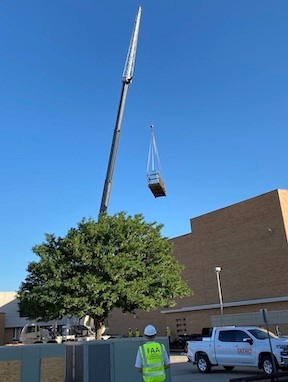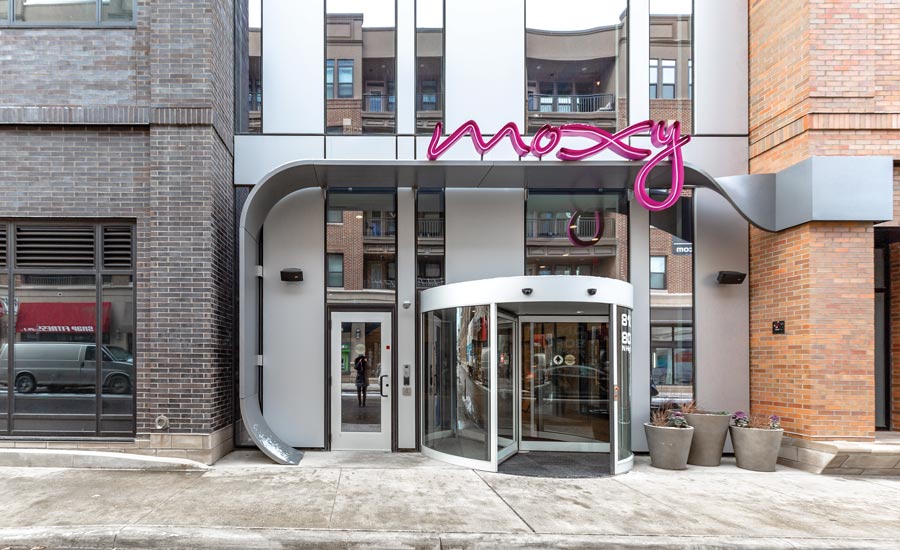Commercial contractors and technicians searching for ways to ease their customers’ building problems used to worry about strictly the HVAC system. As technology and disease change the built environment, contractors are now looking for new ways to provide the health and security services required to both successfully and efficiently run a commercial structure. These examples show how leveraging HVAC, health, and security is helping contractors and building managers across the nation.
Taking Temperatures
At the Galesburg Cottage Hospital and Clinics in Illinois, Zyter Inc. has deployed five ThermalAlert imaging cameras in a stand-alone configuration. Three access points — the hospital’s main entrance, the Galesburg clinic entrance, and the emergency room entrance at Galesburg Cottage Hospital — each received one camera. The other two cameras have been placed at the main entrances of the Knoxville and Monmouth clinics.

TEMPERATURE READINGS: ThermalAlert is a dual spectrum, thermal imaging solution that delivers continuous, real-time, non-contact temperature monitoring. Those individuals with abnormal temperature readings can be redirected to a different entrance for additional testing or care.
ThermalAlert is a dual-spectrum thermal imaging solution that delivers continuous, real-time, non-contact temperature monitoring. The Centers for Disease Control and Prevention noted that 83-99% of people with a coronavirus infection have a fever. With a detection time of less than one second and accuracy of ±0.5°F, smart alerts from thermal imaging cameras are sent instantly to medical staff or security personnel monitors, computers, or mobile devices. Those individuals with abnormal temperature readings can then be redirected to a different entrance for additional testing or care.
With 133 licensed beds, 77 active physicians, 400 hospital employees, and countless visitors at Galesburg, hundreds of people pass in front of the ThermalAlert cameras each day. The devices measure the body temperature — between 86°F to 113°F — of up to six people simultaneously within the temperature detection zone from a distance of up to 20 feet.
“The Zyter ThermalAlert has helped Galesburg Cottage Hospital build both community confidence and ease the screening process undertaken by their team of COVID-19 infection control personnel,” said Sanjay Govil, founder and CEO of Zyter Inc. “The automated temperature screening reduces the overall screening clearance time for each visitor, which then creates a better customer experience while promoting confidence. With Zyter ThermalAlert in place, the hospital and clinics can now provide more reassurance to visitors, patients, and employees that they are providing a safer environment.”
“We take the health of our patients, visitors, and employees very seriously,” said Sanjay Sharma, chief executive officer, Galesburg Cottage Hospital. “While the installation of the infrared cameras isn’t a golden ticket in the fight against COVID, it most certainly provides an additional and important tool in helping our team members assess and reduce the risk of COVID-19 exposure.”
President TATRO Plumbing Co. Inc.
Upgrading Schools

NEW COMFORT SAFETY: Since early summer, TATRO Plumbing Co. Inc. in Garden City, Kansas, has been repairing, upgrading, and completely reinstalling HVAC systems in schools spanning from elementary through high school in cities in Kansas and Colorado.
In spite of COVID-19, TATRO Plumbing Co. Inc. in Garden City, Kansas, is working with both Kansas and Colorado school districts to ensure that going to school remains safe and comfortable. Since early summer, TATRO has been repairing, upgrading, and completely reinstalling HVAC systems in schools spanning from elementary through high school in a variety of cities in the region.
“COVID has been difficult for everyone, but TATRO has continued to push forward with the school projects it committed to,” said Justin Sanchez, president of TATRO. “We made sure that kids won’t have to worry about old, outdated air conditioning systems on top of all the extra steps this year brings. We are proud of our relationship with area school districts.”
Mixed-Use Building Challenge
Since its opening in fall 2019, the 800 North High Street Building has become a fixture in the community. Part of Columbus, Ohio’s Short North Arts District, a neighborhood known for promoting local businesses and culture, this modern mixed-use development features a co-working space, two restaurants, and Marriott’s modern hotel brand, Moxy.
“When you look at the Short North, you’re talking about the hottest submarket within the hottest city in the Midwest,” said Nelson Yoder, RA, principal at Crawford Hoying Development.
In securing a piece of sought-after, premium real estate, Crawford Hoying had to ensure the building would drive revenue and that its mechanical systems could help balance costs through efficiency and design flexibility.
“When we approach a building like this, we’re constantly evaluating it on a bunch of different viewpoints,” explained Yoder. “Energy efficiency is an important pillar, along with aesthetics, occupant comfort, and how the uses come together.”
For the 10-story, 150,000-square-foot building, the engineers at PE Services specified 215 tons of City Multi® variable refrigerant flow (VRF) systems from Mitsubishi Electric Trane HVAC US (METUS).
“One of the main benefits of this VRF system is that there are a number of unit types that can all be packaged for the infrastructure of the project,” said Craig Slaughterbeck, president, PE Services. “This is space-saving and helped us meet the needs of the architecture firm, as we had to spatially allocate the HVAC system to fit within their desired aesthetic.”
Aesthetics were a key concern for the building, especially for the hotel portion.
“For this project, we have 250 indoor units and the styles vary based on their location throughout the building,” said Bryan Crnarich, P.E., commercial regional manager, METUS. “In the hospitality areas of the building, it was really important to the ownership that we had ducted-style units. In the electrical areas, we have wall-mounted units, and in the co-working space we have sleek, ductless ceiling cassettes.”
The result has been an energy-efficient building that maximizes leasable space and keeps occupants comfortable while minimizing operational costs. VRF’s design flexibility also helped create more usable, leasable, and revenue-generating space for the building. The contractors at G Mechanical Inc. installed 90% of the mechanical systems for the building on a single platform located on the roof.
“The Mitsubishi Electric outdoor units are allowed to sit close together while still running efficiently,” said Sean Minshall, project manager, G Mechanical Inc. “Everything was so compact — the platform even includes the Mitsubishi Electric DOAS unit.”
With these space-saving benefits, the architects were able to add a rooftop bar to the same level as the mechanical platform.



Report Abusive Comment